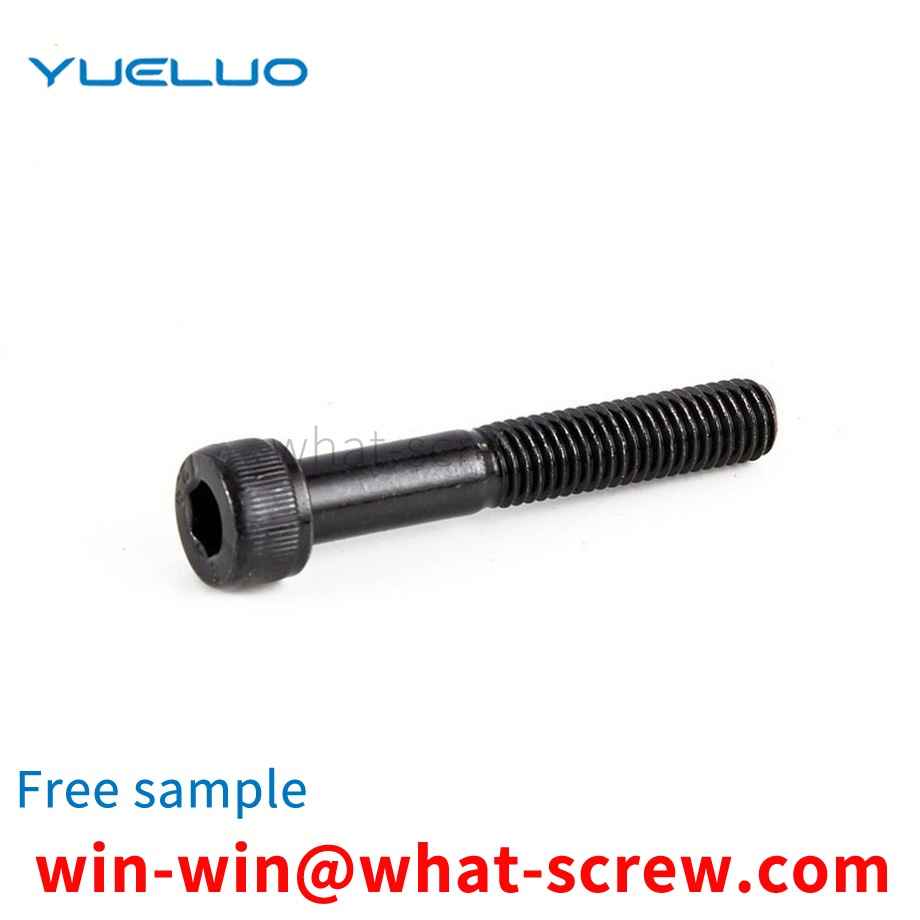In the past production, gaskets were generally obtained from two channels: first, standard gaskets were mostly purchased from the market, and the cost was high; non-standard gaskets, due to the small demand, required separate tooling and molds, which were expensive and long production cycle. It is difficult to purchase; Second, the plate is purchased by the enterprise, and then the washer is formed by the automatic cutting machine. Because the cut nodules and cut marks produced by flame cutting do not meet the requirements for use, the inner and outer diameters need to be reserved 2 ~3mm machining allowance, and then finish the outer diameter and inner diameter by lathe.
Inspection method There are two types of screw surface inspection, one is the inspection before the screw is produced and not plated, and the other is the inspection after the screw is plated, that is to say, after the screw is hardened and the surface of the screw is treated. . After the screws are produced and before electroplating, we inspect the screws in various aspects such as size and tolerance. See if there are national standards or customer requirements. After the surface treatment of the screws, we will inspect the plated screws, mainly to check the color of the plating and whether there are any broken screws. In this way, when we deliver screw goods to customers, customers can successfully pass the customs when they receive the goods. Inspection of screws after treatment: 1. Appearance quality requirements The inspection of the appearance of screws is carried out from the aspects of appearance, electroplating layer and so on. Second, the inspection of the thickness of the screw coating 1. The measuring tool method uses a micrometer, a vernier caliper, a plug gauge, etc. 2. Magnetic method The magnetic method is used to measure the thickness of the coating layer, which is a non-destructive measurement of the non-magnetic coating layer on the magnetic substrate with a magnetic thickness gauge. 3. Microscopy Microscopy is called metallographic method, which is to magnify the etched fasteners on a metallographic microscope with a micrometer eyepiece to measure the thickness of the coating on the section. 4. Timing flow method The timing flow method uses a solution that can dissolve the coating to flow on the local surface of the coating, and calculates the thickness of the coating according to the time required for the local coating to dissolve. There are also coating drop method, anodic dissolution Coulomb method, etc. 3. Inspection of the adhesion strength of the screw coating There are many methods for evaluating the adhesion between the coating and the base metal, usually the following. 1. Friction polishing test; 2. File method test; 3. Scratch method; 4. Bending test; 5. Thermal shock test; 6. Extrusion method. 4. Inspection of corrosion resistance of screw coatings The corrosion resistance inspection methods of coatings include: atmospheric exposure test; neutral salt spray test (NSS test); acetate salt spray test (ASS test), copper accelerated acetate salt spray test (CASS) test); and corrosion paste corrosion test (CORR test) and solution spot corrosion test; immersion test, inter-dipping corrosion test, etc.
A rivet is a part that uses its own deformation or interference to connect the riveted parts in riveting. With the continuous progress and development of science, rivets have been used in many occasions because of their convenient use and reliable connection. The rivet includes a nail head and a stem. The traditional processing mold for the rivet head includes a base, and a nail head forming part is arranged on the base. However, due to the limited service life of the mold, the processing mold of this structure is replaced. It needs to be replaced together with the base, which is a waste of material, which increases the production cost, and the rivet itself is relatively cheap, so this reduces the profit of the enterprise.
The profile of the American National thread (60 profile angle and H/8 flatness) is different from the Wyeth thread profile (55 profile angle and H/6 flattening height). American National Thread is widely used in regions and industries that are influenced by American industry. In World War II, due to the inconsistent thread standards used by the Allies, the logistical supply difficulties caused serious economic losses and casualties to the Allies. Immediately after the end of World War II, the United States, the United Kingdom, Canada and other allies immediately began to formulate a unified thread standard among allied countries, and promulgated a unified thread standard in 1948. Because the economic strength and military strength of the United States dominated the Allied forces at that time, the unified thread was mainly formulated according to the national thread standard of the United States. Unity; the latter letter N is derived from the N designation for American National Threads. Since then, the unified thread began to squeeze the original use market of the British Whitworth thread.
Gears, mechanical components with teeth on the rim that can continuously mesh to transmit motion and power, are mechanical parts with teeth that can mesh with each other. The gears used in industry are generally made of steel. The commonly used steels are quenched and tempered steel, hardened steel, carburized and quenched steel and nitrided steel. The strength of cast steel is slightly lower than that of forged steel, and it is often used in Larger-sized gears; gray cast iron has poor mechanical properties and can be used in light-load open gear transmissions; ductile iron can partially replace steel gears; plastic gears are mostly used in places where light loads and low noise are required, and are matched with them The gears are generally made of steel gears with good thermal conductivity.
We have many years of experience in the production and sales of screws, nuts, flat washers, etc. The main products are: cup head, cylindrical head, round head countersunk head, grade 12.9, hexagon socket screws, anti-loosening reverse nuts, full hexagon socket screws and other products. We can provide you with the right fastener solution for you.



















 Service Hotline
Service Hotline




